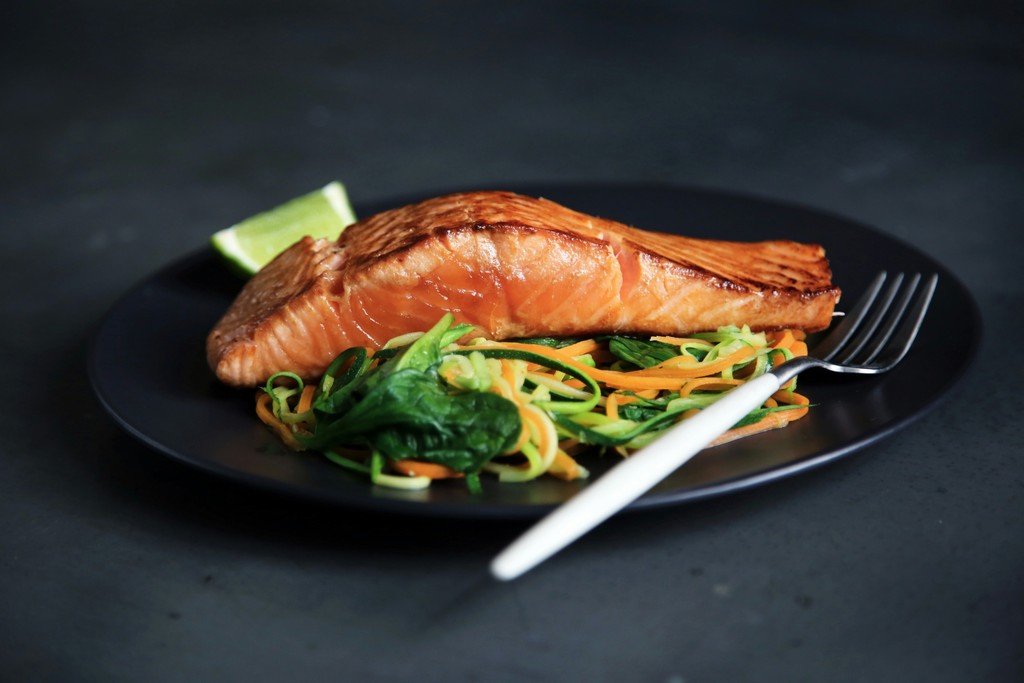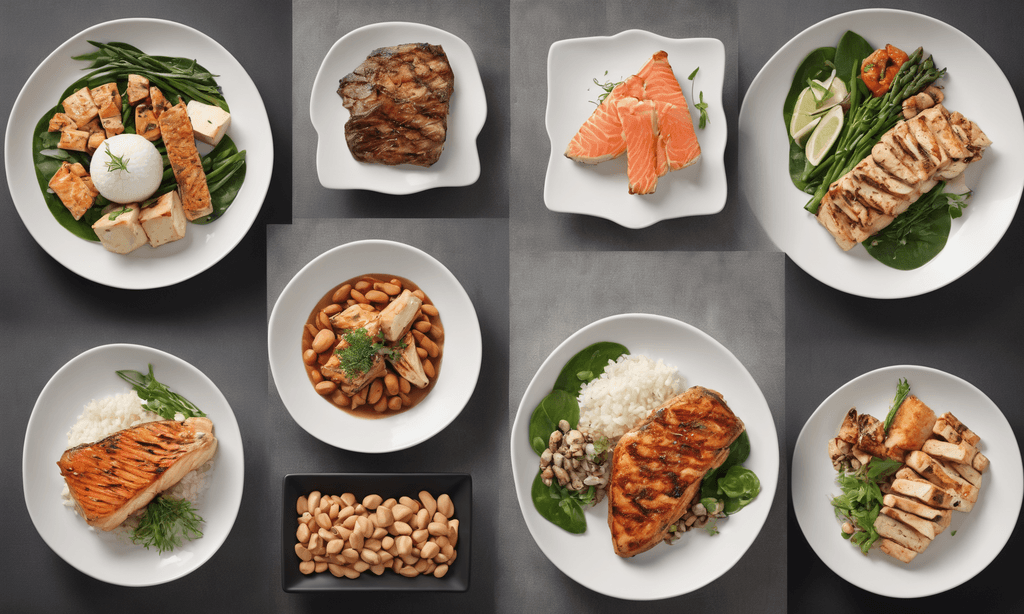


Crafting Balanced Meals: A Guide to Meal Design for Optimal Nutrition
Last updated: Feb 12, 2024
Nutrition
Eating healthy doesn't have to be a complex science. In fact, designing a balanced meal can be simple, enjoyable, and incredibly beneficial for your overall health and wellness. This guide will walk you through the essential components of a well-rounded meal, helping you make informed choices that suit your nutritional needs and personal preferences.
Key Components of a Balanced Meal
Diverse Food Groups
Incorporate various foods: proteins, carbohydrates, fats, fruits, and vegetables.
Aim for a mix of these components in each meal.
Portion Control
Familiarize yourself with serving sizes to avoid overeating.
A balanced plate should have half of vegetables and fruits, one-quarter of protein, and one-quarter of carbohydrates.
Incorporating Fiber for Satiety
Include whole grains, legumes, fruits, and vegetables in your meals.
Fiber helps in feeling full and aids digestion.
Spread fiber intake throughout the day.
Understanding the Perfect Plate
Understanding portion sizes is key to meal balance. This approach helps prevent overeating while ensuring you're getting enough of each food group.
For Breakfast
Hydration:
Begin with a glass of water or hydrating foods.
Hydration is vital after a night's rest.
Protein Sources:
Include eggs, Greek yogurt, cottage cheese, or plant-based proteins.
Protein aids in fullness and provides essential nutrients for the day.
Healthy Carbohydrates:
Opt for whole grains like oatmeal, whole grain toast, or quinoa. These carbs offer energy and are rich in fiber, vitamins, and minerals.
Add fruits for sweetness and vitamins.
Vegetables can be included in omelets or smoothies.
For Lunch and Dinner
Half Your Plate: Vegetables
Aim to fill half of your plate with vegetables.
This portion should consist of a variety of colors and types to maximize nutrient intake.
Leafy greens, colorful bell peppers, and carrots are all excellent choices.
A Quarter for Protein
Approximately a quarter of your plate should be dedicated to protein sources.
Choose lean proteins like chicken, fish, tofu, or beans.
The ideal serving size is roughly the size of your palm or a deck of cards.
A Quarter for Whole Grains or Starchy Vegetables
The remaining quarter should be reserved for whole grains or starchy vegetables.
Options include brown rice, quinoa, whole wheat pasta, or starchy vegetables like sweet potatoes.
A good rule of thumb is a serving size that can fit in your cupped hand.
Flavor and Satisfaction
Balanced meals should also be flavorful and satisfying. Use herbs and spices to add depth without extra calories. Incorporating a variety of textures and flavors can also make meals more enjoyable and satiating. Remember, fiber and protein help you feel full and satisfied.
Practical Meal Planning Tips
Meal planning is a lifesaver for those with a busy lifestyle. Dedicate time each week to planning and preparing meals. Quick and balanced meal ideas include a spinach and feta omelet for breakfast, a quinoa and roasted vegetable salad for lunch, and grilled salmon with sweet potato and steamed broccoli for dinner.
Conclusion
Creating balanced meals is an art and a science – one that nourishes your body and delights your palate. By understanding the basics of meal composition and making mindful choices, you're on your way to a healthier, happier you. Remember, there's no one-size-fits-all approach, so feel free to experiment and find what works best for you.
Eating healthy doesn't have to be a complex science. In fact, designing a balanced meal can be simple, enjoyable, and incredibly beneficial for your overall health and wellness. This guide will walk you through the essential components of a well-rounded meal, helping you make informed choices that suit your nutritional needs and personal preferences.
Key Components of a Balanced Meal
Diverse Food Groups
Incorporate various foods: proteins, carbohydrates, fats, fruits, and vegetables.
Aim for a mix of these components in each meal.
Portion Control
Familiarize yourself with serving sizes to avoid overeating.
A balanced plate should have half of vegetables and fruits, one-quarter of protein, and one-quarter of carbohydrates.
Incorporating Fiber for Satiety
Include whole grains, legumes, fruits, and vegetables in your meals.
Fiber helps in feeling full and aids digestion.
Spread fiber intake throughout the day.
Understanding the Perfect Plate
Understanding portion sizes is key to meal balance. This approach helps prevent overeating while ensuring you're getting enough of each food group.
For Breakfast
Hydration:
Begin with a glass of water or hydrating foods.
Hydration is vital after a night's rest.
Protein Sources:
Include eggs, Greek yogurt, cottage cheese, or plant-based proteins.
Protein aids in fullness and provides essential nutrients for the day.
Healthy Carbohydrates:
Opt for whole grains like oatmeal, whole grain toast, or quinoa. These carbs offer energy and are rich in fiber, vitamins, and minerals.
Add fruits for sweetness and vitamins.
Vegetables can be included in omelets or smoothies.
For Lunch and Dinner
Half Your Plate: Vegetables
Aim to fill half of your plate with vegetables.
This portion should consist of a variety of colors and types to maximize nutrient intake.
Leafy greens, colorful bell peppers, and carrots are all excellent choices.
A Quarter for Protein
Approximately a quarter of your plate should be dedicated to protein sources.
Choose lean proteins like chicken, fish, tofu, or beans.
The ideal serving size is roughly the size of your palm or a deck of cards.
A Quarter for Whole Grains or Starchy Vegetables
The remaining quarter should be reserved for whole grains or starchy vegetables.
Options include brown rice, quinoa, whole wheat pasta, or starchy vegetables like sweet potatoes.
A good rule of thumb is a serving size that can fit in your cupped hand.
Flavor and Satisfaction
Balanced meals should also be flavorful and satisfying. Use herbs and spices to add depth without extra calories. Incorporating a variety of textures and flavors can also make meals more enjoyable and satiating. Remember, fiber and protein help you feel full and satisfied.
Practical Meal Planning Tips
Meal planning is a lifesaver for those with a busy lifestyle. Dedicate time each week to planning and preparing meals. Quick and balanced meal ideas include a spinach and feta omelet for breakfast, a quinoa and roasted vegetable salad for lunch, and grilled salmon with sweet potato and steamed broccoli for dinner.
Conclusion
Creating balanced meals is an art and a science – one that nourishes your body and delights your palate. By understanding the basics of meal composition and making mindful choices, you're on your way to a healthier, happier you. Remember, there's no one-size-fits-all approach, so feel free to experiment and find what works best for you.
Eating healthy doesn't have to be a complex science. In fact, designing a balanced meal can be simple, enjoyable, and incredibly beneficial for your overall health and wellness. This guide will walk you through the essential components of a well-rounded meal, helping you make informed choices that suit your nutritional needs and personal preferences.
Key Components of a Balanced Meal
Diverse Food Groups
Incorporate various foods: proteins, carbohydrates, fats, fruits, and vegetables.
Aim for a mix of these components in each meal.
Portion Control
Familiarize yourself with serving sizes to avoid overeating.
A balanced plate should have half of vegetables and fruits, one-quarter of protein, and one-quarter of carbohydrates.
Incorporating Fiber for Satiety
Include whole grains, legumes, fruits, and vegetables in your meals.
Fiber helps in feeling full and aids digestion.
Spread fiber intake throughout the day.
Understanding the Perfect Plate
Understanding portion sizes is key to meal balance. This approach helps prevent overeating while ensuring you're getting enough of each food group.
For Breakfast
Hydration:
Begin with a glass of water or hydrating foods.
Hydration is vital after a night's rest.
Protein Sources:
Include eggs, Greek yogurt, cottage cheese, or plant-based proteins.
Protein aids in fullness and provides essential nutrients for the day.
Healthy Carbohydrates:
Opt for whole grains like oatmeal, whole grain toast, or quinoa. These carbs offer energy and are rich in fiber, vitamins, and minerals.
Add fruits for sweetness and vitamins.
Vegetables can be included in omelets or smoothies.
For Lunch and Dinner
Half Your Plate: Vegetables
Aim to fill half of your plate with vegetables.
This portion should consist of a variety of colors and types to maximize nutrient intake.
Leafy greens, colorful bell peppers, and carrots are all excellent choices.
A Quarter for Protein
Approximately a quarter of your plate should be dedicated to protein sources.
Choose lean proteins like chicken, fish, tofu, or beans.
The ideal serving size is roughly the size of your palm or a deck of cards.
A Quarter for Whole Grains or Starchy Vegetables
The remaining quarter should be reserved for whole grains or starchy vegetables.
Options include brown rice, quinoa, whole wheat pasta, or starchy vegetables like sweet potatoes.
A good rule of thumb is a serving size that can fit in your cupped hand.
Flavor and Satisfaction
Balanced meals should also be flavorful and satisfying. Use herbs and spices to add depth without extra calories. Incorporating a variety of textures and flavors can also make meals more enjoyable and satiating. Remember, fiber and protein help you feel full and satisfied.
Practical Meal Planning Tips
Meal planning is a lifesaver for those with a busy lifestyle. Dedicate time each week to planning and preparing meals. Quick and balanced meal ideas include a spinach and feta omelet for breakfast, a quinoa and roasted vegetable salad for lunch, and grilled salmon with sweet potato and steamed broccoli for dinner.
Conclusion
Creating balanced meals is an art and a science – one that nourishes your body and delights your palate. By understanding the basics of meal composition and making mindful choices, you're on your way to a healthier, happier you. Remember, there's no one-size-fits-all approach, so feel free to experiment and find what works best for you.
Stay informed
Sign up for our newsletter to receive wellness content and updates related to Amelia.
Sign up for our newsletter to receive wellness content and updates related to Amelia.
More content



The Power of Protein



Making Sense of Nutrition Labels



Healthy Snacking Options: Ideas for Nutritious and Satisfying Snacks.



Understanding the Impact of Your Menstrual Cycle on Strength Performance



How Menstrual Cycle Impacts on Your Overall Wellness



Your Essential Health and Fitness Guide: Cutting Through the Noise